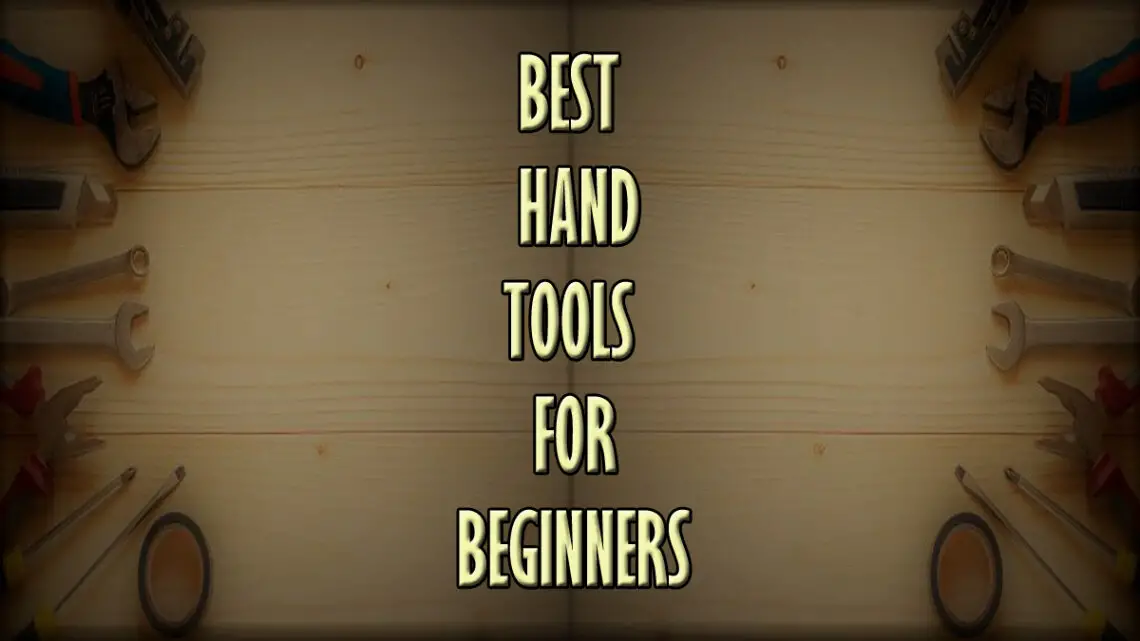
Best Hand Tools for Beginners to Complete Tasks Easily
Welcome to the world of Hand Tools! Whether you’re a complete beginner or a seasoned veteran, having the right tools for the job is essential. In this guide, we’ll explore the best hand tools for beginners. From basic hammers and screwdrivers to more specialized tools like saws and pliers, this guide will provide the information you need to get the job done right.
The best hand tools for beginners can be challenging to decide on, as there are many to choose from. From hammers to screwdrivers, there is a wide array of tools available, so making the right choice can be overwhelming. Fortunately, there are several hand tools that are essential for any beginner’s toolkit.
Whether you’re just starting out in the world of DIY, like repairing and restoring old furniture, or you’re a professional worker, having the right-hand tools is essential. To make sure you have all the essential items, it’s important to have a well-stocked toolbox. Here, we take a look at some of the best hand tools for beginners.
Related Article: The 9 Best Hand Tool Brands of 2025 for Professional Users
Related Article: Best Automotive Tools: Essential Gear for Every Car Enthusiast
You may also read: The Top 9 Best Ratcheting Wrench Sets of 2025
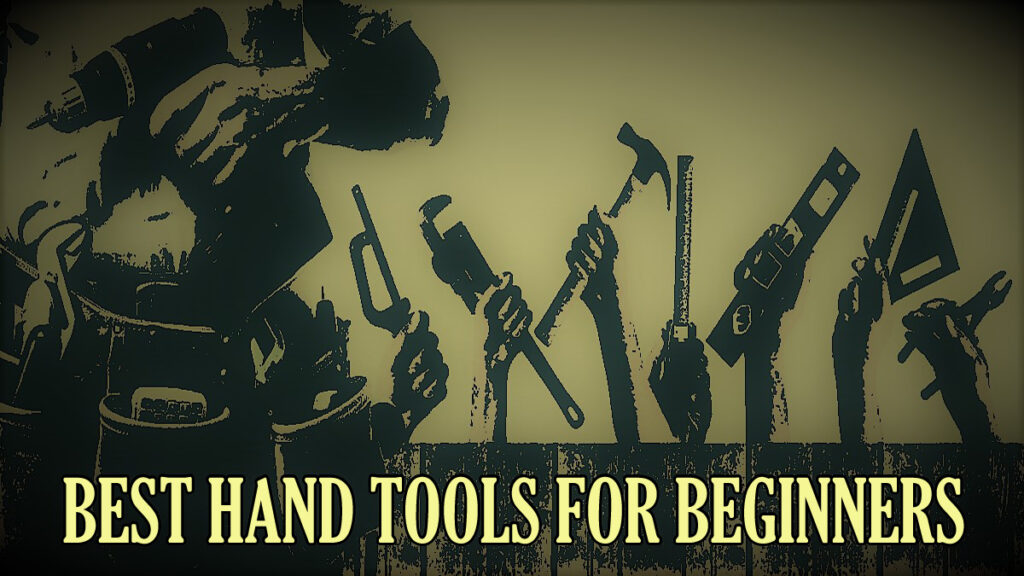
Related Article: Top 9 Best DIY Tools to Complete A DIY Project
You may also read: The 11 Basic Hand Tools Safety Rules For Professional Users
You may also read: How to Clean Hand and Power Tools Safely: Your Go-To Guide
Best Hand Tools For Beginners
1. Hammer:
A hammer should be the go-to choice for any beginner, as it is one of the most versatile tools around. Hammers are used for a variety of tasks, making them indispensable for completing a wide range of projects. When selecting a hammer, it is important to look for one that is well-balanced and has a comfortable grip.
The hammer is one of the most common and widely used hand tools. It is an essential part of any toolbox and has been around since ancient times. Hammering is a basic mechanical process that involves striking an object with a hard and heavy head to drive it into or through a target.
Hammering is used for a variety of purposes, from basic construction to delicate woodworking. It is used to pound nails, drive pins, and shape metal. In addition, it can be used to straighten bent metal, flatten surfaces, and break up rock. It can even be used for decorative purposes such as carving or engraving.
Hammer types vary widely in size, shape, weight, and purpose. The most common type of hammer is the claw hammer, which is used to drive and remove nails. Other types of hammers include mallets, ball peen hammers, and sledgehammers.
When using a hammer, safety is of the utmost importance. Always wear safety glasses and use a hammer with the correct weight and size for the job at hand. It is also important to ensure that the striking surface is clean and free of dirt and debris.
The hammer is a simple yet incredibly versatile tool that is essential to any toolbox. With proper use and care, it can be used for a wide variety of purposes and is sure to come in handy for any job.
2. Screwdriver:
A screwdriver is another essential tool for any beginner. Screwdrivers are used to securely fasten screws and bolts, and come in a variety of sizes and shapes. Flat-head, Phillips-head, and hex screwdrivers are all common, and each is designed to handle different types of screws. It is best to have several screwdrivers of various sizes on hand, as this will ensure that you have the right tool for any job.
Screwdrivers are one of the most essential and common hand tools used in many industries. They are used for driving screws into materials, removing screws from materials, and for assembling and disassembling components. They are also used for tightening and loosening screws and bolts, and for making small adjustments. Screwdrivers come in various shapes, sizes, and types, which are designed for specific uses.
Screwdrivers consist of a handle, shaft, and tip. The handle is usually made of plastic, metal, or rubber, and is used to hold the screwdriver. The shaft is the part that is inserted into the screw head, and the tip is the part that is used to turn the screw. There are many different types of screwdrivers including flat head, Phillips head, Torx, square head, and hex head. Each type of screwdriver is designed for a specific purpose.
Screwdrivers are a necessary part of many industries and are an essential tool for many tasks. They come in many shapes and sizes and are used for a variety of tasks. Always make sure to use the correct type of screwdriver and the correct amount of torque when using a screwdriver in order to ensure that the job is done correctly.
3. Pliers:
Pliers are hand tool that has been around for centuries. They are designed with two arms connected to a pivot point, allowing them to be used for gripping and cutting objects. Pliers come in many shapes and sizes, designed for various tasks.
Indeed, pliers should be included in any beginner’s toolbox. Pliers are used for gripping, tightening, and loosening, making them incredibly useful for various tasks. When purchasing a pair of pliers, look for ones that are well-constructed, with comfortable handles and a good grip.
Pliers are most commonly used for gripping and cutting wire, but they can also be used to hold objects in places, such as during soldering or bending metal. They are also used to tighten and loosen nuts, bolts, and other small hardware. Pliers are also great for reaching into tight spaces and corners, such as when removing old wiring or plumbing fixtures. The jaws of pliers can also be used to flatten or bend the material to create a specific shape.
Pliers can be made from a variety of materials, such as steel, brass, aluminum, and plastic. Different types of pliers work best for other jobs. For example, linesman pliers are great for gripping and cutting wire, while needle-nose pliers are great for reaching into tight spaces. Crimping pliers are great for creating loops and bends in metal while locking pliers can be used to keep objects in a fixed position.
No matter what type of job you are doing, pliers are an essential tool to have in your toolbox. They are versatile, and durable, and come in a wide variety of types and sizes. Whether you are a professional or a DIY enthusiast, pliers are an indispensable tool to have in your arsenal.
4. Adjustable Wrench:
An adjustable wrench is another great tool for beginners. These wrenches are used for tightening and loosening nuts and bolts and are available in several sizes. When selecting an adjustable wrench, look for one that is durable and has a comfortable grip.
Do-it-yourself projects are becoming increasingly popular, and the adjustable wrench is a great tool to have in your toolbox if you’re just starting out. An adjustable wrench is a versatile tool that can be used to make a variety of adjustments and repairs.
The adjustable wrench is a simple hand tool that is made up of a straight handle and a movable jaw. The jaws of the adjustable wrench can open and close around the head of a nut or bolt, allowing you to tighten or loosen them without having to buy a variety of different-sized wrenches. The adjustable wrench is extremely versatile and can be used on almost any type of fastener, from bolts and nuts to plumbing fixtures.
Another great feature of the adjustable wrench is that it can be used with one hand, which is a great advantage for those who are just starting out with hand tools. This also makes it easier to reach into tight spaces and make adjustments that may not be possible with other tools.
Adjustable wrenches are also extremely durable and are made from high-quality materials that are designed to last for years. Not only are they cost-effective, but they will also give you the confidence to tackle more difficult projects as you become more experienced.
If you’re looking for a beginner hand tool, the adjustable wrench is an excellent choice. Basically, the adjustable wrench is a great tool to have in your toolbox which is versatile, easy to use, and durable.
5. Handsaw:
A handsaw is a basic tool that has been used for centuries to cut through materials like wood, metal, and plastic. It consists of a thin metal blade, with a handle on one end, and a sharpened edge on the other. Basically, a handsaw is great for cutting wood and is a must-have for woodworking projects. It is essential to choose a fine-toothed blade to ensure precise and accurate cuts.
Most handsaws are designed to be used in a push-pull motion, with the blade being pushed into the material and then pulled back out. This type of saw is invaluable when it comes to do-it-yourself projects, as they are relatively inexpensive and easy to use.
Handsaws come in a variety of shapes and sizes and can be used for a wide range of tasks. Common varieties include the crosscut saw, which is ideal for cutting across the grain of the wood, the back saw, which is used for making fine, precise cuts in wood, and the coping saw, which is often used for cutting intricate curves.
6. Chisels:
Chisels are great tools for cutting and carving wood, and they come in a variety of sizes and shapes. Basically, chisels are some of the oldest and most useful tools for woodworking and carpentry. They come in a variety of shapes and sizes and can be used for a wide range of tasks. Whether you’re a professional carpenter or an amateur hobbyist, having a set of chisels in your toolbox is essential.
Chisels are used to carve, shape, and remove material from wood, stone, and other materials. They can be used to make intricate details, such as grooves, notches, and other designs. They can also be used to split pieces of wood and shape them into different shapes. Chisels are also used for roughing out and hogging out materials, such as for making doorways or furniture legs.
The most common type of chisel is the carpenter’s chisel. It is usually about 10 inches long and has a cutting edge that is either straight or slightly curved. The cutting edge is usually made from steel, and the handle is generally made from wood. There are also smaller chisels, such as paring chisels and mortise chisels, which are used for more delicate detailing.
When it comes to safety, it’s essential to wear safety goggles when using chisels, as the sharp edges can cause eye injuries. It’s also important to keep chisels away from children, as they can easily injure themselves.
Chisels are an essential tool for any woodworker or carpenter. With the right tools and proper care, a set of chisels can last for many years and be used for virtually any carpentry project. Make sure to pick up a few of the most common sizes for different applications.
7. Level:
Level as a hand tool is one of the most essential tools to have in any toolbox or workbench. Not only does it help you to make sure that your surfaces are level, it can also be used for a variety of other tasks.
A level is a simple tool that consists of a long, straight metal bar with two or more vials filled with liquid. The vials are marked with lines or markers that allow you to easily check the level of a surface. The most common types of levels are the two-vial level and the three-vial level.
The two-vial level consists of two vials at opposite ends of the level, while the three-vial level has three vials that are placed along the length of the level. The level can check the level of a surface, such as a floor or a tabletop. Additionally, it can check the accuracy of angles, such as when installing shelves or cabinets. You can also use it to check the accuracy of the walls in a room or the alignment of a door frame.
It is also a great tool for checking the alignment of objects such as furniture, doors, or windows. It can be used to ensure that the object is straight and level and that it is evenly spaced from the wall or floor.
Finally, it can be used to check the accuracy of measurements. This can be especially helpful when working with large projects, such as building a deck or a shed. By using the level, you can ensure that your measurements are accurate and that your project is level.
Overall, the level is an invaluable tool for any DIYer or professional contractor. It is easy to use and extremely versatile, making it an essential tool for any toolbox.
8. Utility Knife:
Utility knives are one of the most versatile and commonly used tools in a variety of industries, from construction and carpentry to household tasks. Whether you’re a professional tradesperson or a DIY enthusiast, a utility knife is a must-have for a variety of tasks.
A utility knife is a small, hand-held tool with a blade that’s usually retractable, making it better for close work. They usually come with a variety of interchangeable blades that are suited for cutting through different materials and tasks. Utility knives are also designed with safety in mind, with the blades securely stored away and only emerging when needed.
Utility knives are perfect for cutting through a variety of materials, including cardboard, plastic, leather, fabric, and more. They are also great for precision tasks that require a more delicate approach. Thanks to the various blade types available, you can choose the right one for the job.
One of the great advantages of a utility knife is its portability. They are small and lightweight, making them easy to transport in your toolbox or pocket. This makes them ideal for use on the job site or around the house.
When it comes to choosing the right utility knife for the job, it’s important to consider the variety of blades available and the type of material that needs to be cut. If you’re a professional tradesperson or a serious DIY enthusiast, investing in a quality utility knife is well worth it.
Overall, utility knives are versatile and indispensable tools for any toolbox. Whether you’re a novice or an experienced tradesperson, having a quality utility knife is something that everyone should have.
9. Miter Saw:
If you’re a woodworker, carpenter, or do-it-yourselfer, chances are you’ve heard of, or even used, a miter saw. This versatile power tool is essentially a circular saw that can make angled cuts in wood, plastic, and other materials. Although the miter saw has been around for a while, it’s only recently become an indispensable tool in many workshops and home improvement projects.
When used properly, a miter saw is capable of making accurate cuts in a wide range of materials. This makes it ideal for creating trim and molding and cutting door and window frames. The saw’s adjustable blade also allows it to make compound miter cuts, which are angled in two directions. This makes it possible to cut specialized pieces with just one cut.
In addition to its accuracy and versatility, the miter saw is also known for its safety features. It is equipped with a guard that prevents the user from coming in contact with the blade. The guard is adjustable and can be removed for convenience when cutting thicker materials.
While the miter saw is a powerful and helpful tool, it’s also important to remember that it’s still a powerful tool. When using a miter saw, it’s essential to follow all safety instructions and keep the work area clear of any objects that could interfere with the operation of the saw. It’s also essential to wear safety glasses while operating the saw.
All in all, the miter saw is an essential tool for any woodworker, carpenter, or do-it-yourselfer. With its ability to make precise and accurate cuts, as well as its safety features, the miter saw is a must-have for any home improvement project.
10. Tape Measure:
A tape measure is an essential hand tool for anyone who does DIY projects, works on carpentry tasks, or simply needs to measure something. This tool has been around for centuries, and with its versatility and portability, it is an ideal tool to have on hand.
The tape measure is made of flexible metal or fiberglass, with both imperial and metric measurements printed on it. It usually comes in a length of 25 feet or more, depending on the manufacturer. At one end is a metal hook, while the other end is a metal latch. The tape measure also has a sliding lock mechanism that prevents the tape from sliding back inside the case.
To use the tape measure, place the hook at one end of the object you wish to measure and extend the tape to the other end. Use the sliding lock to keep the mark in place, then read off the measurement. You can also use the tape measure to measure angles and curves, such as a rafter angle or the circumference of a circle.
Indeed, a tape measure is an indispensable tool for anyone who does a lot of DIY projects, carpentry work, or simply needs a quick and accurate measurement. With its portability and versatility, it’s a must-have tool for anyone’s toolbox.
To Know More About Versatile Hand Tools, Go Here>>>
Related Article: 7 Best Hand Planers of 2025 for Professional Users
Related Article: Tools Every Man Needs: Power Up Your Toolkit!
You may also read: Top 9 Best Framing Hammers of 2025 for Professional Users
Conclusion
In summary, the best hand tools for beginners include a hammer, screwdriver, pliers, an adjustable wrench, etc. With these useful tools, beginners can complete a variety of tasks, making them indispensable for any toolbox.
These are just a few of the essential hand tools for beginners. Make sure to stock up on the basics before you start any DIY project or other tasks. Once you have these tools, the possibilities are endless!
In conclusion, getting the right set of hand tools for beginners is essential in getting the most out of any DIY project. Whether you are just starting out in the world of DIY or have been doing it for a while, having the right set of hand tools is essential. With the right set of hand tools, you can tackle any project or repair that comes your way.
Related Article: Best Power Tool Brands of 2025 for Professional Users
You may also read: The Top 7 Best Caulking Guns of 2025
Related Article : The 7 Best Sharpening Stones of 2025
You may also read: The 9 Best Woodworking Tools of 2025 for Professional Users


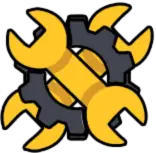

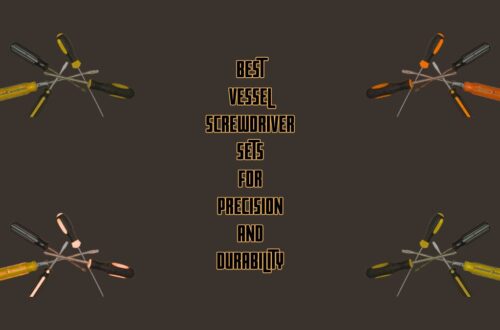
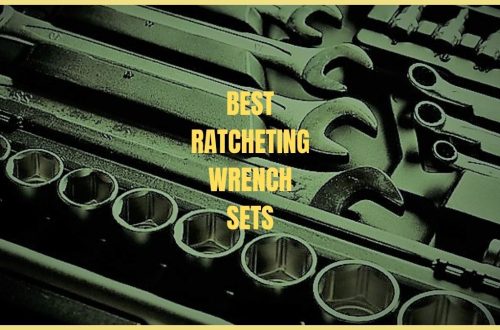
21 Comments
Rashid
Nice one for hand tools
Jak
Loved it. Carry on.
toolstopics
Stay Tuned
toolstopics
Thanks, Stay with us.
Pingback:
Pingback:
Pingback:
Pingback:
Pingback:
Pingback:
Pingback:
Pingback:
Pingback:
Pingback:
Pingback:
Pingback:
Pingback:
Pingback:
Pingback:
Pingback:
Pingback: